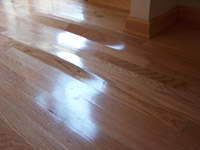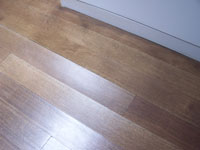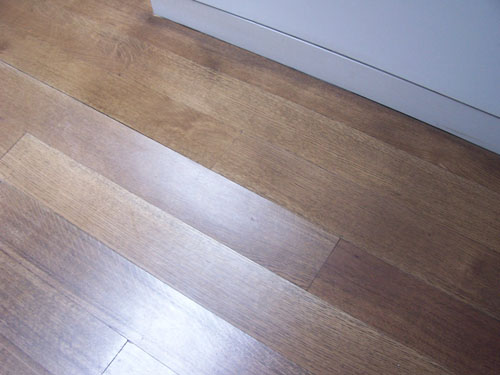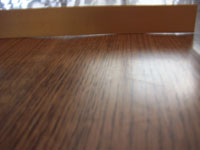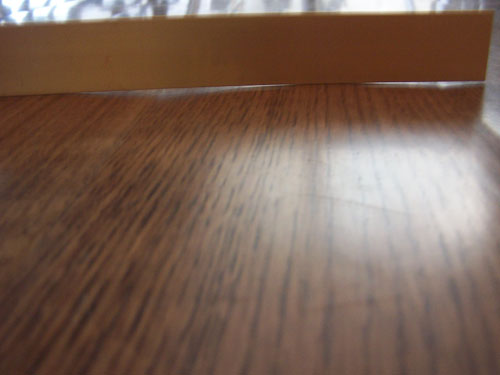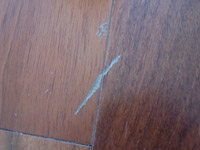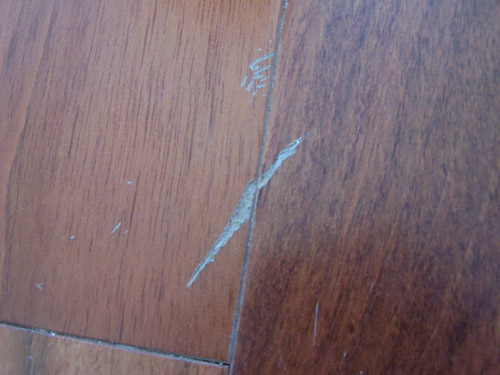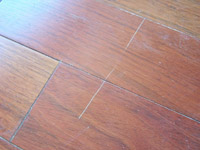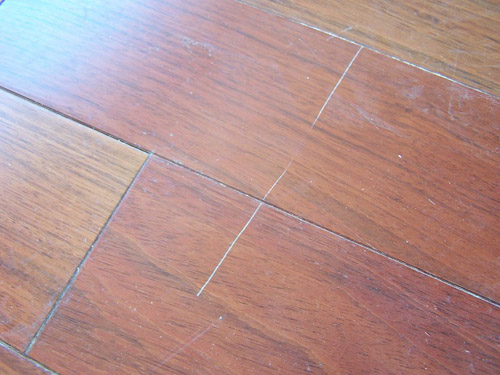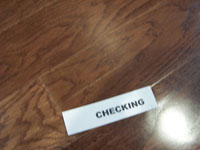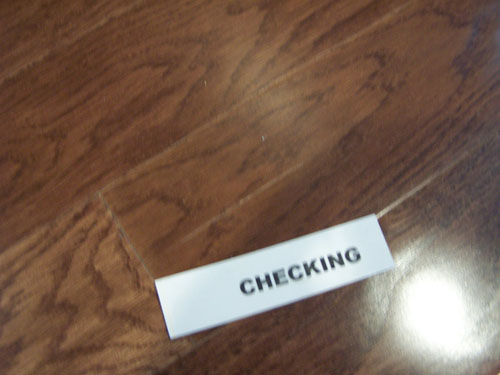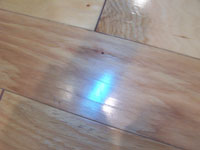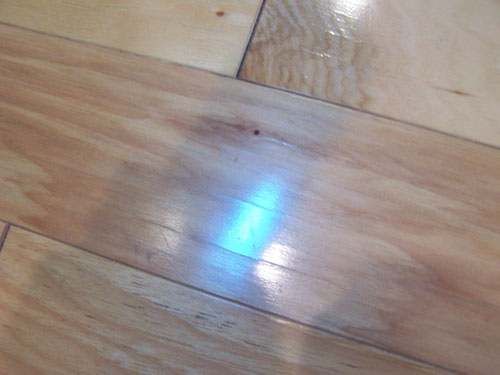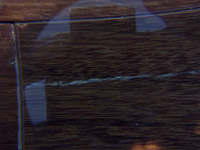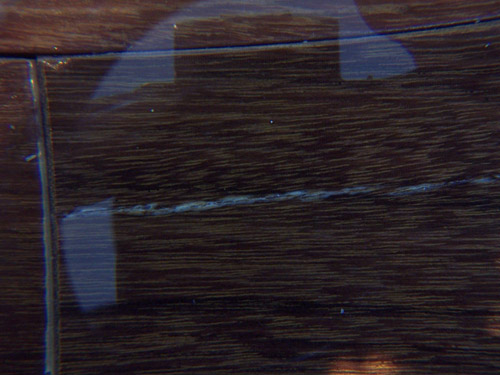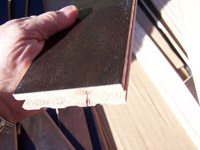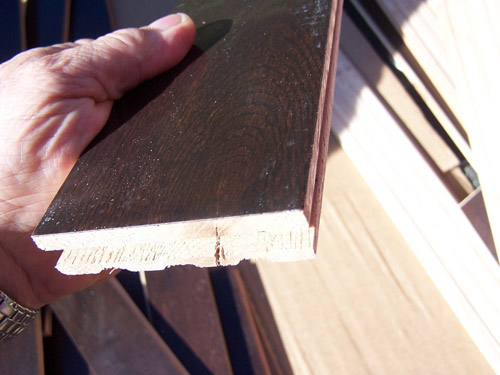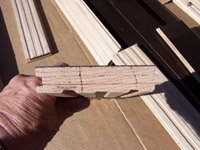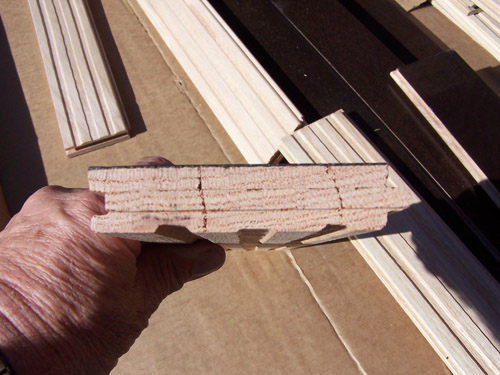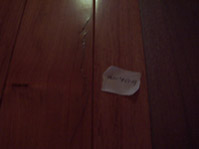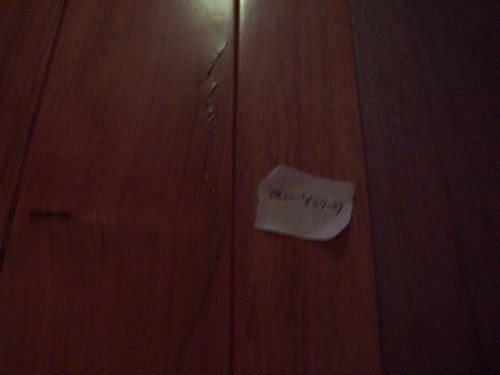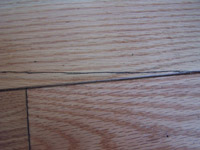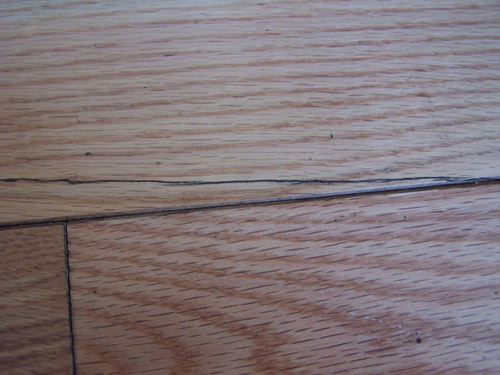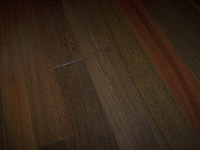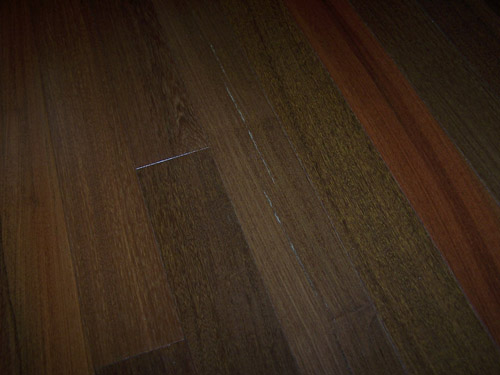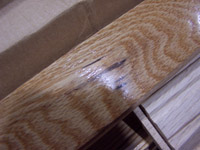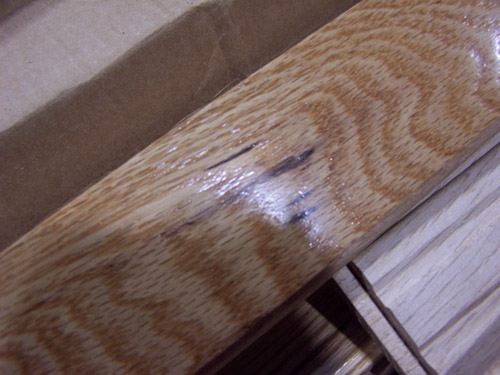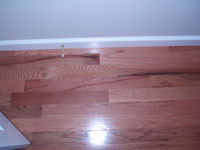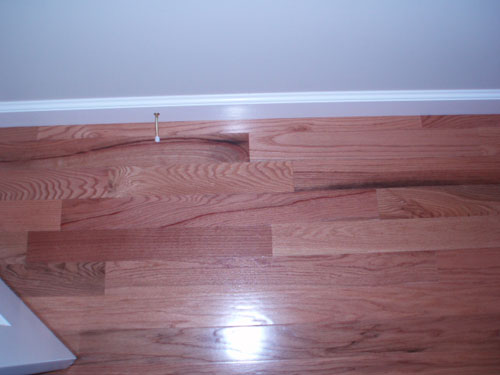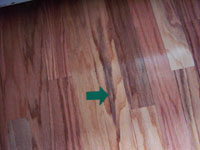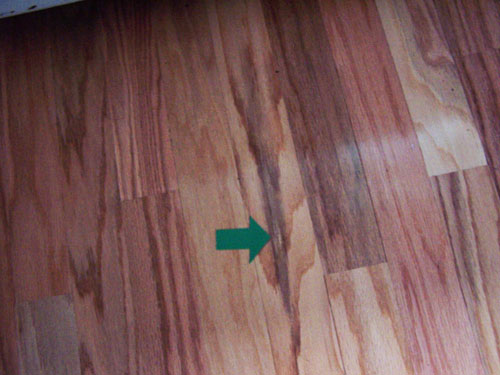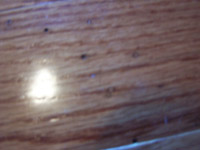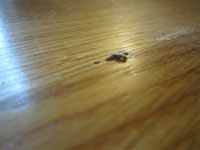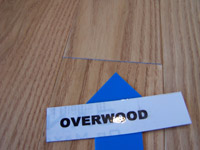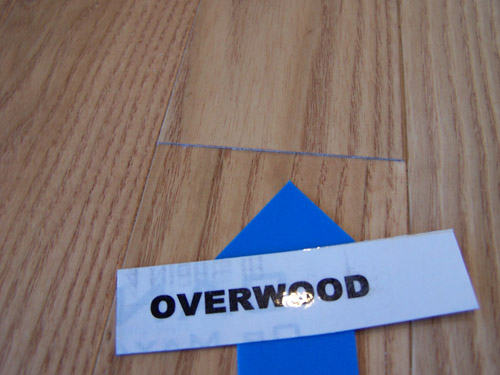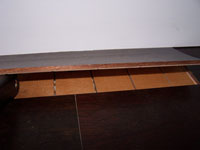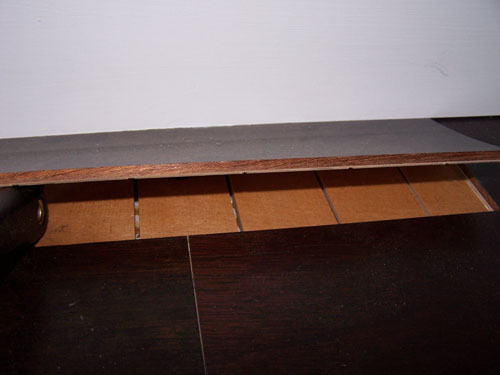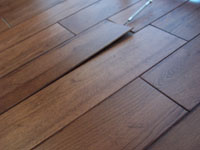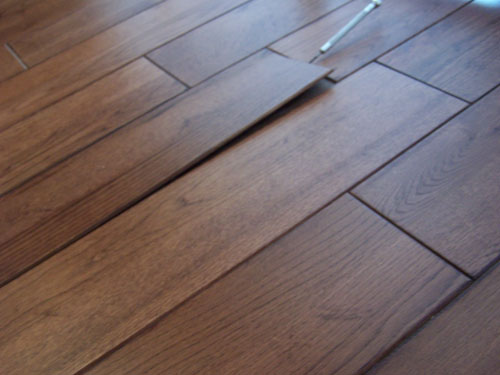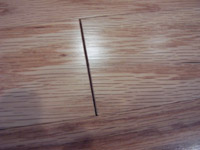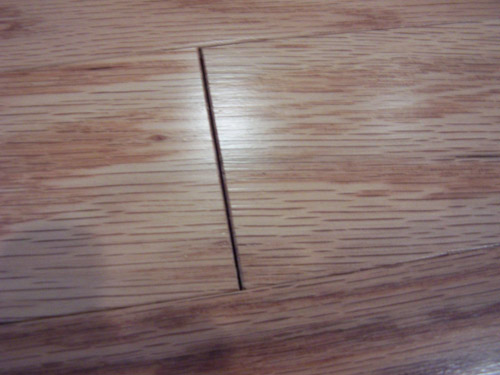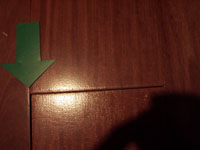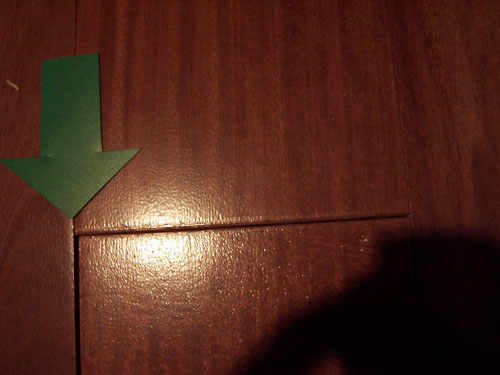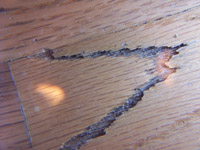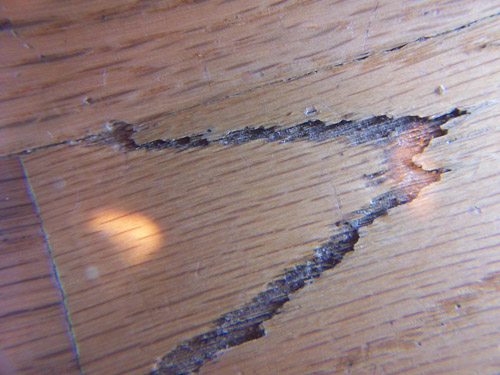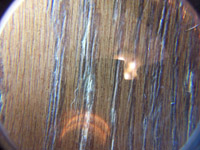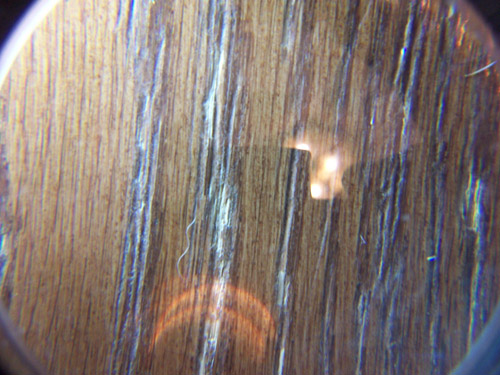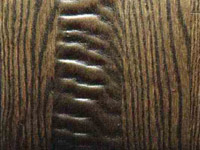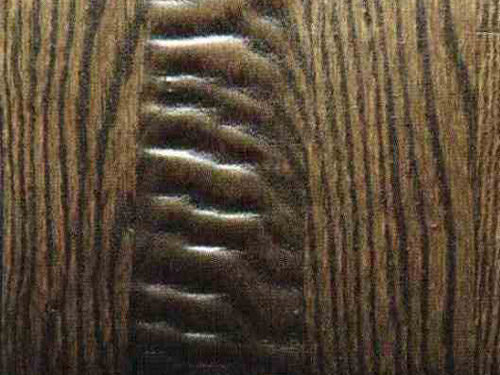
Common Floor Problems Explained...
Carpet | Hardwood | Laminate | Ceramic Tile | Vinyl Tile | Linoelum
Hardwood...
Buckling
Buckling is a condition where the wood floor is lifting off of the subfloor usually appearing within the first year after completion of installation.
- This is typically an installation error
- Improper nailing by the installer
- High relative humidity at the location
- A water leak
- Can sometimes be a site related condition
Rollover Images for larger view:
Cupping or Dishing / Crowning
Cupping is an appearance where the edges of the planks are higher than the center. This condition can affect an entire floor or just a few planks in one confined area. In some cases cupping will return to its original shape depending on the degree of the cupping and the length of time it has been cupped.
- Cupping is a site related issue due to a moisture imbalance. This condition can be corrected before installation in many cases making it an installation error.
- Crowning is the opposite of cupping. With crowned flooring the center is higher than the edges. Crowning is extremely rare and almost never seen.
Rollover Images for larger view:
Surface Scratches
If scratches are not present immediately when the floor is installed they will never be considered as a manufacturing issue. Many manufacturers have 25 year and even lifetime warranties. Reading the fine print on all warranties will always exclude scratching. No manufacturer warrants scratches. Most common causes of scratching are
- Damage done by the installer
- Lack of felt chair pads
- Normal use or items pilled or dragged across the surface.
- Scratches crossing multiple planks are proof positive the scratches came after the flooring was installed.
Rollover Images for larger view:
Checking
Checking consist of fine hairline cracks running along the grain on the surface of the wood flooring. Checking most commonly becomes noticeable in late winter or early spring after months of low relative humidity. Low humidity, a site related condition is the primary cause of checking. It is possible for some checking to be related to manufacturing issues. Both solid flooring and engineered wood (plywood core) are subject to checking.
Rollover Images for larger view:
Cracking
Cracking is similar to checking. The primary difference is typically cracks run through the full thickness of the flooring and is most common at the ends of the planks. This issue is often manufacturing but can also be related to relative humidity at the job site.
Rollover Images for larger view:
Windshake
Windshake is another type of cracking along the grain lines. Wind shake will usually appear as long cracks within the length of a board. In many instances some of the wood will separate and appear as delaminating. Like its name, the cause is high winds in forest causing trees to bend and damage cellular structure of the wood. This damage will develop into cracks after the wood is dried and subject to normal changes in relative humidity in a home. Windshake is accepted as a manufacturing issue.
Rollover Images for larger view:
Mineral Streaks
Mineral streaks are dark lines usually running with the length of the grain. Mineral streaks are a natural part of tree growth. They are not considered a manufacturing defect. Depending on the grading of the product mineral streaks may be included. Most manufacturers will not include mineral streaks in select and better grades.
Rollover Images for larger view:
Worm Holes
Worm holes are caused by powder post beetles and other forms of wood boring insects. Worm holes are not considered a manufacturing issue. Filled and unfilled wormholes will be included depending on the grade.
Rollover Images for larger view:
Overwood
Overwood is a condition where one edge of one plank is higher than the joining plank. This condition can be on the long edge, short edge, or both edges. Overwood can be:
- A manufacturing issue
- Installation issue
- A home structural issue.
Only a field inspection by a certified floor inspector will identify the underlying cause.
Rollover Images for larger view:
Delaminating of Engineered Flooring
Delaminating can only occur in engineered flooring (plywood). Engineered flooring is made from multiple layers of thin wood glued together. Delaminating occurs when the veneers separate at the glue line. With very few exceptions delaminating is a manufacturing related issue.
Rollover Images for larger view:
Gapping
Spaces between the planks of a floor in either the length or width of the planks are known as gapping. Gapping has many causes.
- Manufacturing issues
- Installation error
- Site related home structural conditions
- Environmental conditions.
A field inspection by a certified floor inspector is required to determine the cause.
Rollover Images for larger view:
Dish-out of Spring Wood– Shellout
Shell-out of spring wood is a condition where the softer wood, which grows during the early part of the growing season wears away or is gouged out leaving the harder late wood growth only.
Rollover Images for larger view:
White Line Syndrome in Site Finished Floors
White line syndrome is a condition, shown in photos, where a floor is exhibiting whitish color lined along the joints of boards. The condition is most noticeable on floors that have been stained a dark color prior to finishing. Although the condition can occur on all site finished floors it is rarely noticed on floors of a lighter color due to the lack of contrast between the actual wood color and the whitish tone. There are various issues that are believed to cause this issue. Only a site inspection will help in determining the source of the issue.
Rollover Images for larger view:
Grading
The most common grades of unfinished lumber based on the National Lumber Hardwood Lumber Association are:
- Clear Oak
- Select Oak
- No.1 Common
- No.2 common.
Many manufacturers may include their own categories proprietary to their product line. The most common grades for prefinished products are:
- Prime Prefinished
- Standard Prefinished
- Standard & Better Prefinished
- Tavern Prefinished
- Tavern & Better Prefinished.
- Some manufacturers will also include Cabin or Builder grade as a category similar to Tavern Grade.
Clear or Prime Prefinished are usually mostly heartwood, containing the mostly clear with a minimum of discoloration and character marks.
Select or Standard Prefinished can be from the heartwood or sapwood portion of the tree. Small tight knots per 3’, pin worm holes, brown spots (mineral streaks) not running the full board, flag worm holes per 8’, as well as a reasonable amount of slight open checks and burls are permitted.
If a manufacturer has their own published grading rules they will always supersede the standards set by The National Wood Floor Association (NOFMA GRADING).
